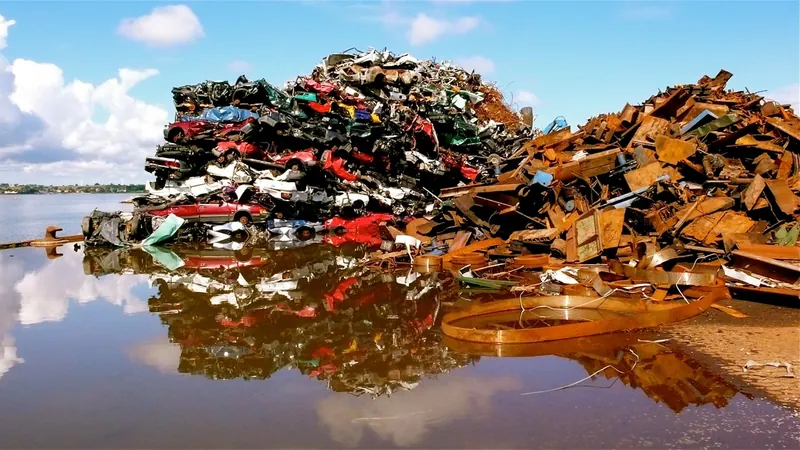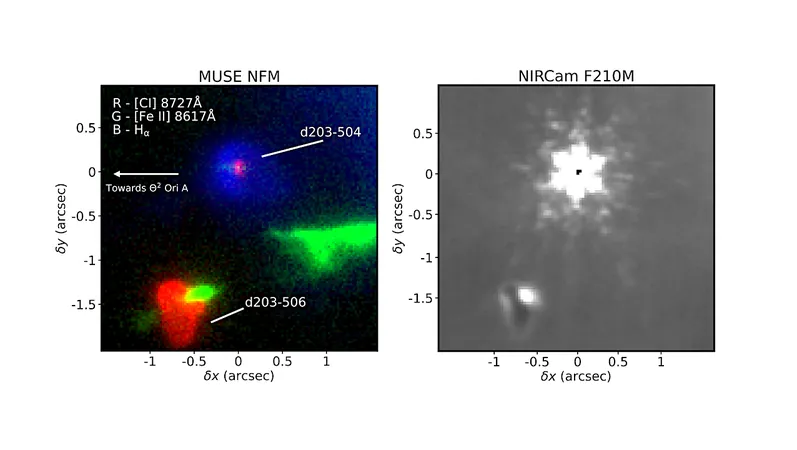
Groundbreaking Discovery: Scientists Unleash Fungal Power to Transform Trash into Treasure!
2024-12-29
Author: Siti
Groundbreaking Discovery Unveiled
In a groundbreaking development, researchers from the University of Southern California have unveiled an innovative method that harnesses the power of a waste-eating fungus to convert commonly discarded carbon fiber materials into valuable products. This revolutionary process arrives at a critical juncture, addressing both environmental waste and the burgeoning demand for eco-friendly materials.
Upcycling Carbon Fiber
According to reports from USC Today, the team's approach focuses on upcycling carbon fiber fabric and polymers typically found in manufacturing car panels and light rail vehicles. While these materials play a vital role in the production of sustainable electric vehicles, they pose significant recycling challenges, often ending up in landfills, where they contribute to greenhouse gas emissions and environmental pollution.
Collaborative Study
The collaborative study, conducted alongside researchers from the University of Kansas, identifies a promising solution to this issue. The newfound process not only mitigates waste accumulation in landfills but also repurposes these difficult-to-recycle materials into beneficial products. The rising usage of carbon-fiber-reinforced polymers in crucial sectors such as aerospace, automotive, and energy underscores the urgency of establishing a viable end-of-life strategy for these composites.
Traditional Recycling Challenges
Traditional recycling methods have fallen short, with only about 1% of carbon fiber waste being processed due to a controversial practice that involves incineration. The scientific team's fungal solution stands out as a more effective alternative, allowing for the recovery of valuable materials without resorting to environmentally harmful methods.
Environmental Impact
Estimates suggest that between 6,000 to 8,000 commercial aircraft containing composite materials will reach the end of their lifecycle by 2030, generating a staggering 483,000 tons of composite waste from retired wind turbines by 2050. The innovative fungus proves essential in preventing these materials from contributing further to landfill overflow.
Fungal Solution
Using a specially engineered strain of fungus named Aspergillus nidulans, researchers discovered its unique ability to react with the carbon fiber-reinforced polymer (CFRP), producing a chemical compound called OTA. This finding holds exciting potential for the medical industry, where OTA could be utilized to develop groundbreaking antibiotics and anti-inflammatory drugs.
Expert Insights
"The development showcases the first successful method to extract significant value from both the carbon fibers and the polymer matrix of CFRP materials," announced Travis Williams, a chemistry professor at USC, emphasizing the implications of this research.
Clay C.C. Wang, a co-researcher from USC Mann, echoed these sentiments, asserting, "This discovery represents a more efficient strategy for converting what was once regarded as waste into valuable resources for medical applications."
Sustainable Future
With CFRP demand projected to surge significantly, Williams notes that this transformative approach provides an optimistic pathway for sustainable materials management at a crucial time for both industry and environment. As the world grapples with the urgent need for sustainable solutions, this innovative research may be the key to turning our trash into treasure, paving the way for a greener, more sustainable future.
Conclusion
Could we be on the brink of a revolution that changes how we view waste? The answer might just lie in the extraordinary capabilities of fungi!


 Brasil (PT)
Brasil (PT)
 Canada (EN)
Canada (EN)
 Chile (ES)
Chile (ES)
 Česko (CS)
Česko (CS)
 대한민국 (KO)
대한민국 (KO)
 España (ES)
España (ES)
 France (FR)
France (FR)
 Hong Kong (EN)
Hong Kong (EN)
 Italia (IT)
Italia (IT)
 日本 (JA)
日本 (JA)
 Magyarország (HU)
Magyarország (HU)
 Norge (NO)
Norge (NO)
 Polska (PL)
Polska (PL)
 Schweiz (DE)
Schweiz (DE)
 Singapore (EN)
Singapore (EN)
 Sverige (SV)
Sverige (SV)
 Suomi (FI)
Suomi (FI)
 Türkiye (TR)
Türkiye (TR)
 الإمارات العربية المتحدة (AR)
الإمارات العربية المتحدة (AR)